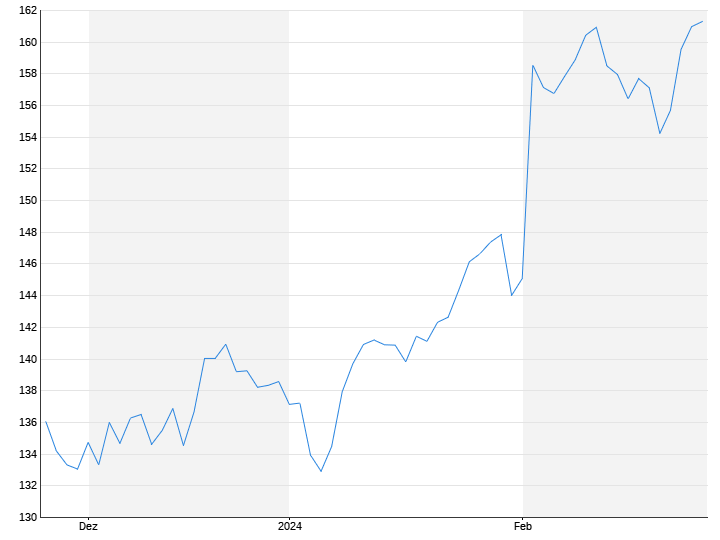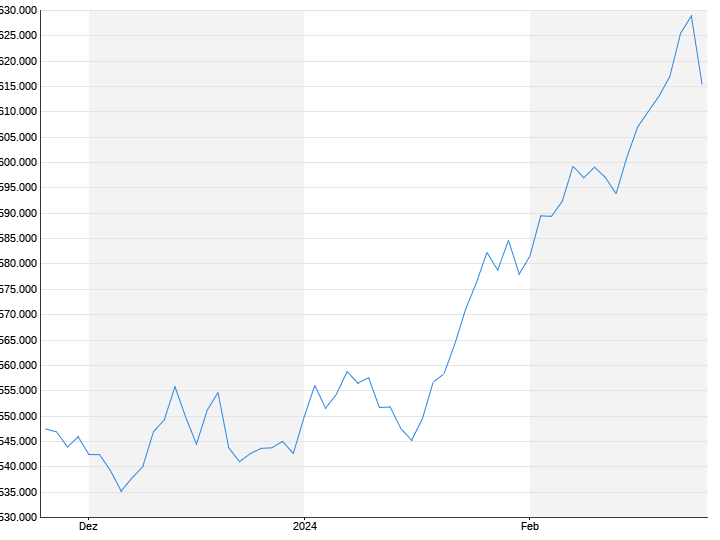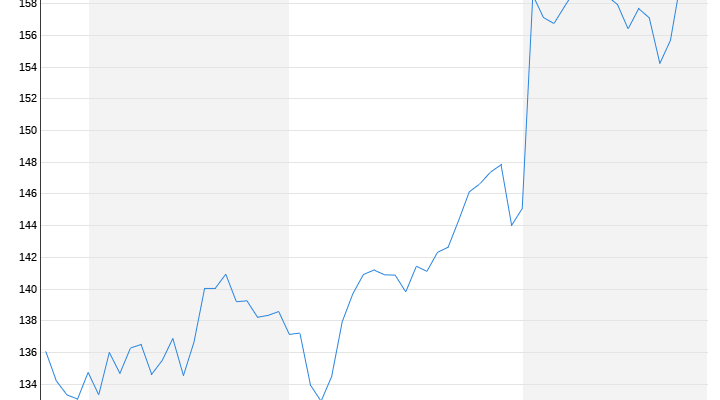Waiting for US consumer data
US investors are keeping their feet still
February 26, 2024, 10:46 p.m
Listen to article
This audio version was artificially generated. More info | Send feedback
The hype surrounding chip manufacturer Nvidia continues to lose momentum. After the recent rally, US investors are starting the new stock market week on a slower note. Traders on Wall Street are now eagerly awaiting fresh data on the consumption of US citizens.
Wall Street ended the first trading day of the week with a slight loss. After the record highs of the previous week – primarily in response to strong business figures from Nvidia – traders spoke of consolidation. Most recently it had risen for three trading days in a row. Investors’ eyes are now set on Thursday, when the US consumer index is on the agenda. However, following US inflation data that was recently higher than expected, expectations regarding the timing of a first interest rate cut have already been pushed back. The expectation is that nothing will happen on the interest rate front before June.
The Dow Jones Index lost 0.2 percent to 39,069 points. The S&P 500 fell by 0.4 percent and for the Nasdaq Composite it fell by 0.1 percent. The 1,138 (Friday: 1,750) price winners on the Nyse were compared to 1,704 (1,069) losers, while 62 (100) titles closed unchanged.
On the bond market, yields recovered some of their losses from Friday. Despite the expectations for the first US interest rate cut being pushed back further recently, there had been a clear decline here. Some market participants see this as statements by the President of the New York Fed, John Williams. It estimates inflation will likely moderate toward 2 percent, paving the way for a cut in U.S. interest rates “later this year.” Williams also said that January’s high inflation readings were likely just a “blip.”
Amazon in the Dow

Amazon shares were traded for the first time as a member of the 30-stock Dow Jones Industrial Index. Walgreens Boots Alliance had to make way. The background is that Walmart is also splitting its shares at a ratio of 1:3 effective at the start of trading. Instead of one, the shareholders now have three shares in their portfolios, which makes the share price visually cheaper. This means that – due to the construction of the Dow – Walmart’s weight is also decreasing, for which the Amazon inclusion is intended to compensate. “The change reflects the evolving nature of the US economy and will increase the weight of retail and other business sectors in the DJIA,” said index operator S&P Dow Jones Indices.
Amazon fell by 0.1 percent and Walgreens Boots Alliance decreased by 3.4 percent. Walmart adjusted by 1.8 percent to $59.60. The shares closed at $175.56 on Friday. Broadcom (+1.0%) was little moved by the fact that the investment company KKR is buying the US chip manufacturer’s end-user computing division (EUC) for around $4 billion. Broadcom is selling the division it inherited as part of its $61 billion acquisition of software maker VMware in 2023. KKR appeared unchanged.
Oil prices fluctuate for no apparent reason


Warren Buffett’s investment vehicle Berkshire Hathaway fell by 1.9 percent despite convincing business figures and gave up initial profits. Intuitive machines fell by 34.6 percent after it was announced that the lunar lander Odysseus tipped over when it touched down on the lunar surface. The aluminum company Alcoa (-4.4%) submitted a $2.2 billion bid for Australian joint venture partner Alumina. After an increased dividend and the starting signal for further share buybacks Domino’s Pizza by 5.8 percent.
The Petroleum prices recovered from temporary losses and turned positive. Brent and WTI prices rose by up to 1.4 percent. “The market continues to fluctuate for no apparent reason,” said analysts at Ritterbusch. Around WTI To get out of the current trading range, it would likely require a surprise in US inventory data, US inflation data that causes a larger dollar move, or “evidence of a significant supply disruption in the Middle East that pushes the geopolitical risk premium into the “could drive height”.
